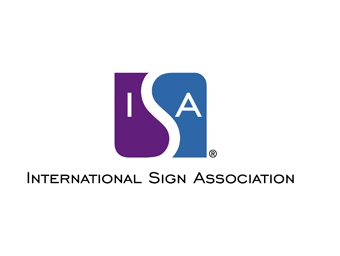Almost two years ago, the U.S. Supreme Court issued its landmark ruling in Reed v. Town of Gilbert. It was the court’s first sign-specific decision in over forty years, and the result is that practically every community in the country has had to revisit its sign codes. In so doing, the International Sign Association (ISA) has found opportunities to provide expertise and insight—and help communities craft sign codes that build stronger businesses.
It also has provided important connections to city planners.
Just last month, attendees at the American Planning Association’s (APA) National Conference heard directly from the sign industry as ISA presented its third education event in four years. The topic this year was on Reed and how communities can draft sign codes that are beneficial and constitutional.
It’s a story we know well, thanks to our work in hundreds of communities around the country on this issue. Since the unanimous ruling in July 2015, communities have learned more about how to comply with the ruling through ISA presentations at thirteen state and regional APA chapters, covering twenty-one states. These events are a great way for planners to learn the latest about sign code development directly from the sign industry.
In 2016, more than 1,300 planners learned more about crafting reasonable sign codes in ISA-sponsored Webinars and in person, including the Planning for Sign Code Success™ events. Planning for Sign Code Success brings planners together for a day-long education event to help them understand more about the sign, graphics, and visual communications industry, our products and the importance of signs to businesses. Recently these events have helped them understand how to apply Reed to their sign codes.
Getting in front of the very people who determine whether signs get built is vitally important, and developing a relationship in which they seek our advice and input has been invaluable. And when communities seek assistance about becoming compliant with the Reed decision, it gives us the opportunity to advise them on other aspects on their sign code.
Take what’s happened in Baton Rouge, Louisiana over the last few years.
Frank Duke, planning director for the City/Parish Planning Commission, sought out ISA at an APA event to talk about his plans to revamp the community’s sign codes. James Carpentier, ISA’s director of state and local government affairs, impressed upon him the importance of including business input in any proposed changes.
Duke put together a group of community and business leaders and hired an outside firm. Then Reed happened. He attended a session presented by ISA at the 2016 APA National Planning Conference and followed up with Carpentier, who offered to review any proposed changes.
Duke incorporated information learned from the recent ISA publication, Night-time Brightness Level Recommendations for On-Premise Electronic Message Centers, into the sign code. “I can’t speak highly enough of what ISA did in giving us the technological information to update the ordinance in ways that we had not thought about and in ways that our consultant hadn’t considered,” he said.
Before the sign code changes, Baton Rouge lacked “any real standards,” on EMCs, Duke said. And the time that the messages were allowed to change was “much longer than recommended.”
Using the brightness guides allowed the messages to change more frequently and provided better controls over brightness levels. “That was one section that I don’t think we would have come anywhere close to having a good draft of without ISA’s work,” sais Duke.
Duke is often sought out to speak to groups of planners on making sign code changes compliant with the Supreme Court ruling. And he always includes a suggestion that they look to ISA as a resource.
“Any local government working on their sign ordinance who doesn’t engage ISA is making a huge mistake,” he says. “The International Sign Association is a huge resource, and more of us need to take advantage of this expertise.”
—David Hickey
David Hickey is vice president, Government Affairs, at the International Sign Association.











